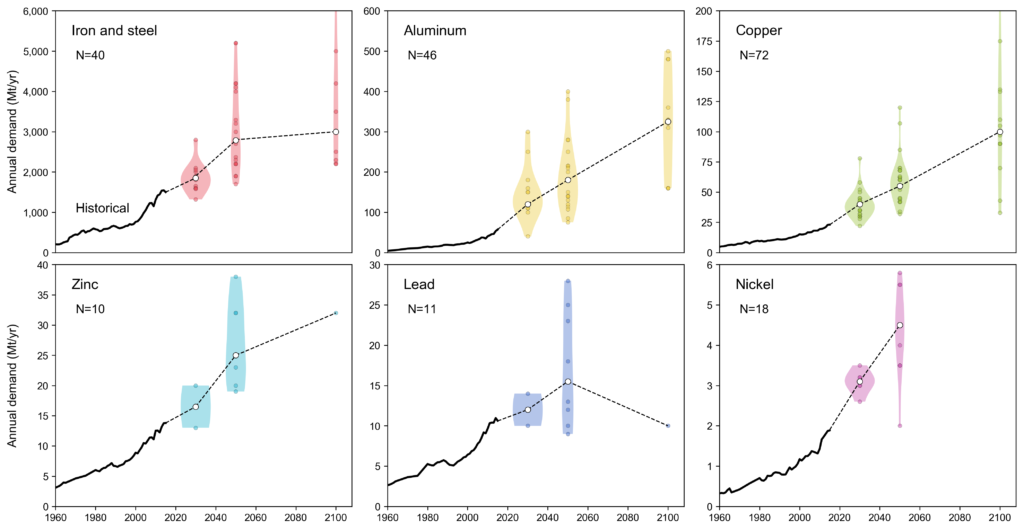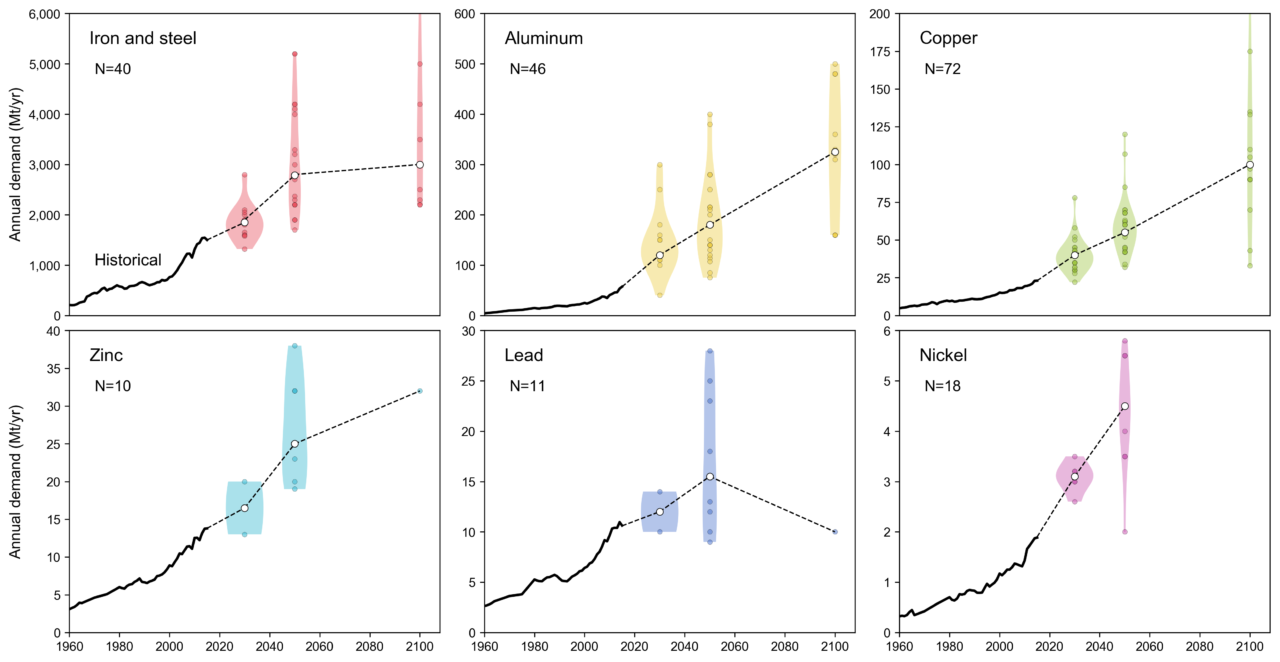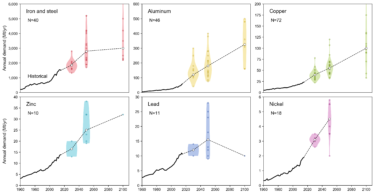
著者
Takuma Watari, Keisuke Nansai and Kenichi Nakajima
掲載誌
Resource Conservation and Recycling, 2021, 164, 105107, Link
要旨
Sustainable metal supply requires well-coordinated strategy and policy packages based on a sound scientific understanding of anticipated long-term demand, supply, and associated environmental implications. Such information, however, is highly fragmented among various case studies. Accordingly, this extensive review explores the projected long-term status of six major metals—iron, aluminum, copper, zinc, lead, and nickel—with around 200 data points for global demand through 2030, 2050 and 2100. Our findings showed that global demand for these major metals is likely to increase continuously over the 21st century, increasing approximately 2–6-fold depending on the metal. Although the extraction and processing required to meet this increase in demand must be environmentally sustainable, the existing extraction and processing scenarios have few explicit linkages to the Earth’s carrying capacity. We further found that strategy choices are heavily biased towards end-of-life phase analyses, specifically that of end-of-life recycling. Consequently, a full range of opportunities across entire life cycles is being overlooked, including advances in product design, manufacturing and in-use phases. Importantly, despite the emergence of numerous scenarios, few provide science-based targets for major metal flows, stock, circularity, and efficiency. These knowledge gaps need to be addressed urgently in order to ensure that future research directly supports science-based decision and policy making.


